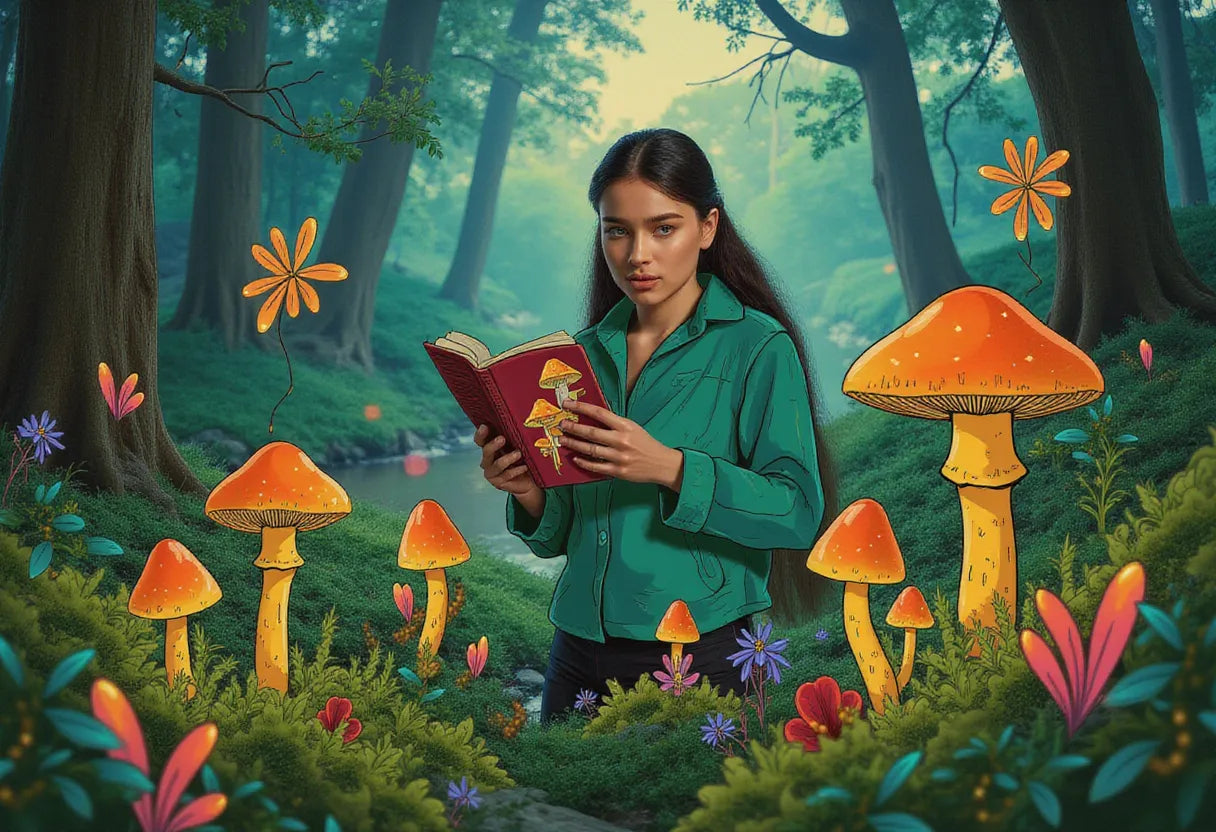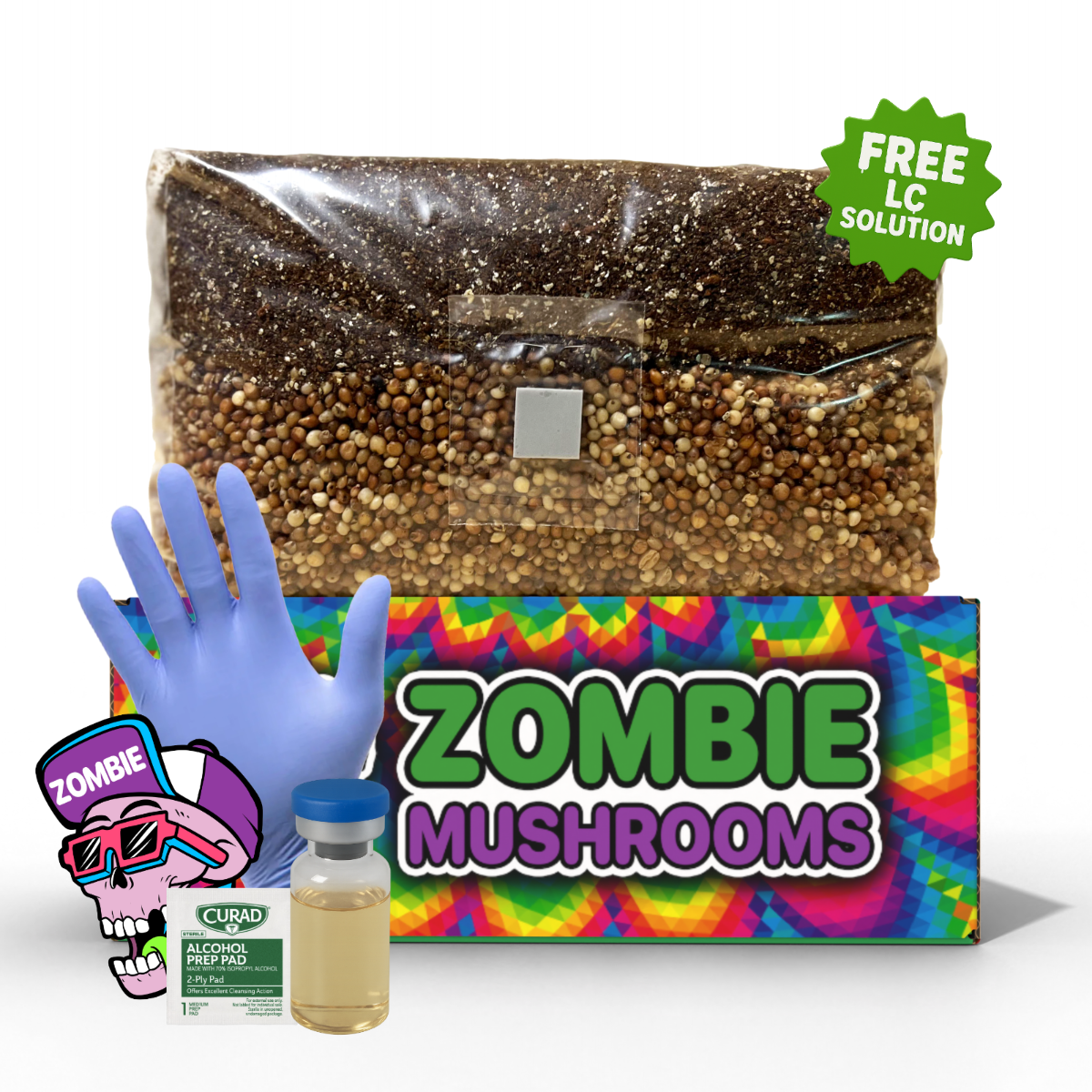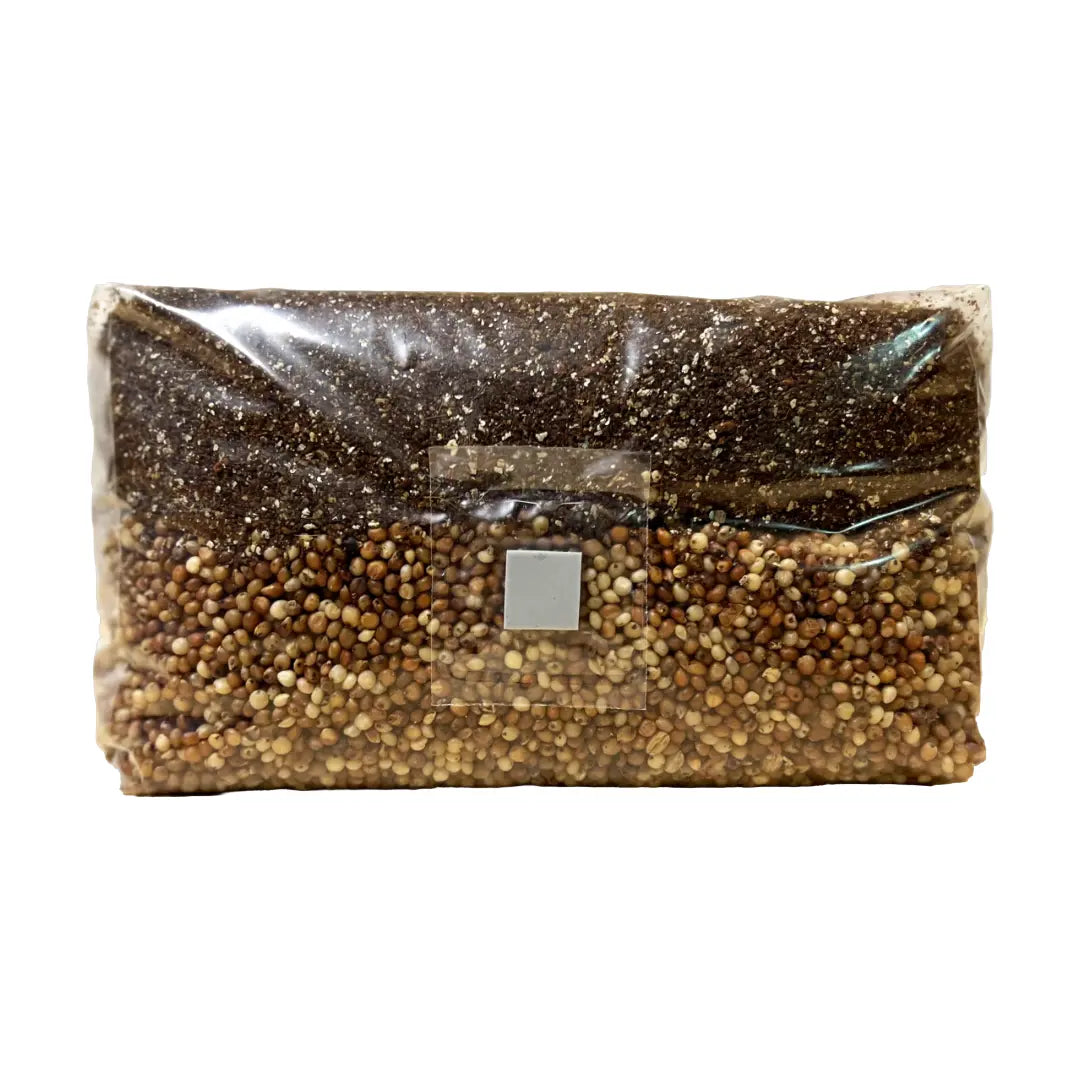⬇️ Prefer to listen instead? ⬇️
- Chanterelle mushrooms are easy for beginners because few toxic ones look like them and they have clear features.
- These mushrooms work with hardwood trees and are hard to grow on farms.
- You find them mainly in Scotland and temperate European forests. Chanterelles grow well from late summer into autumn.
- False chanterelles and jack-o’-lanterns look like them but are poisonous. Look closely at the gill part and where they grow.
- Chanterelles smell fruity and feel solid. This makes them a nice addition to cooking.
Chanterelle mushrooms are a favorite of mushroom hunters. People like them for their nice color, smell, and taste. Compared to other wild mushrooms, chanterelles are fairly easy to spot. This makes them a good way for beginners to start looking for mushrooms safely. This guide will show you how to find chanterelles outside, and why tools like a grain spawn bag are also useful when learning about mushroom cultivation.
What Are Chanterelle Mushrooms?
Chanterelle mushrooms, also called Cantharellus cibarius, are liked by many people who look for wild mushrooms. They are known for their bright golden colors. In English, people often call them "golden chanterelles." In France, they are called "girolles." People like to cook with them because they have good qualities
- Smell: People often say they smell fruity, like apricots. Not many mushrooms smell like this.
- How they feel and taste: They feel solid and meaty. They taste a bit peppery. They stay firm when you cook them even on high heat.
- Good for you: They have fiber. They are high in Vitamin D, especially after being in the sun. They also have helpful things inside that might be good for your health.
Even though new people looking for mushrooms think they are safe, finding chanterelles needs careful checking and doing it more than once. If you mistake them for false chanterelles or other orange mushrooms, you could get a stomach ache or worse. Not identifying them correctly means a fun hobby can be dangerous.

Where and When to Find Chanterelles
Finding chanterelles is part of the fun of looking for mushrooms. These mushrooms are hard to find. They often hide in leaves, under moss, or look like the golden colors of leaves in late summer. Knowing where and when to search greatly increases your chance of finding them.
Where They Are Found
Chanterelles are found in many temperate forests in Europe, North America, and parts of Asia. In the UK
- Most common in: Scotland, the Lake District, and parts of Wales.
- Less common in: Southern England and places with drier farmland.
- Best spots: Moist forests with mature deciduous trees and thick leaves above.
Chanterelles like the damp woods of Scotland. They are most common in places not changed much by modern farming.
What They Need to Grow Well
- Trees they grow near: Beech, birch, oak, and sometimes pine.
- Soil: Soil that drains well, is a bit acidic, and has a lot of dead leaves and plants.
- Other things nearby: Often found near moss. This is a good sign to look for.
It is important to know that chanterelles do not grow on wood that is rotting. They grow straight from the soil. They grow well because they work with tree roots. If you see mushrooms growing right from wood, they are likely a different kind.
When to Look for Them
In temperate areas, you can usually find chanterelles growing from July to November. You find the most in late August.
- Dry summers can make them grow later. Wet weather often makes them start growing.
- Morning dew and foggy weather are good because these mushrooms hold water better than others.
Tip: Keep a notebook about when you look, the weather, and where you were. This helps you see how things are from year to year.

How to Identify Chanterelles (Key Traits)
Knowing how to identify chanterelle mushrooms the right way is a very important skill. This is very important for new people who want to find mushrooms safely and in a way that doesn't hurt the woods.
Things to Look For:
| Trait | What a Chanterelle Looks Like |
|---|---|
| Color | From light yellow to deep egg-yolk gold |
| Cap shape | Wavy, shaped like a funnel, with edges rolled in when young. They flatten as they get older. |
| False Gills | Not deep, ridged lines that fork and run down the stem |
| Stem | Solid, not hollow. It often gets thinner at the bottom. |
| Inside | White and firm inside |
| Smell | Smells strongly fruity, like apricots or stone fruit |
| How they grow | Alone or spread out — never in tight bunches |
Cut one open if you are not sure. Chanterelles are always solid white inside. This shows how they are different from many poisonous kinds. Poisonous ones might look stringy or not white inside.

True Gills vs. False Gills: Learning the Difference
One of the main things that show what a chanterelle is is how its gills look. Or, more correctly, that they don't have true gills.
What False Gills Are
False gills are ridged lines that fork and are not deep. They run down the stem but do not come off easily. They look more like wrinkled folds. They fit easily into the mushroom's inside. You cannot pull them off the cap without ripping the mushroom.
On the other hand
- True Gills: These are thin structures like blades under the cap. They peel off easily.
- How they grow: True gills often grow in lines next to each other and are close together. False gills fork in a messy way.
When you are trying to tell if it is a chanterelle, gently feel the gill part
- If it feels like a smooth ridge or wrinkle, it could be a chanterelle.
- If it feels sharp, like a blade, you are likely looking at a mushroom that looks like it but isn't.

False Chanterelles: Learn the Lookalikes
Finding chanterelle mushrooms is not just about checking the things you look for. It is also about making sure they are not dangerous lookalikes you cannot eat.
False Chanterelle (Hygrophoropsis aurantiaca)
This is probably the most confusing mushroom that looks similar but isn't.
- Cap: More orange. It often looks more even than true chanterelles.
- Gills: Thin, deep gills like blades. These are easy to tell apart from real chanterelles.
- Where it grows: Grows on rotting wood or near old stumps. Chanterelles grow from the soil.
- Smell: It might smell a little fruity, but it doesn't smell as strong as real chanterelles.
It usually won't kill you, but eating false chanterelles can cause stomach problems or make some people see things. It is best not to eat them at all.
Jack-o’-Lantern Mushroom (Omphalotus olearius)
This mushroom is a serious danger to new people looking for mushrooms.
- Poison: It makes you throw up, have diarrhea, and cramps.
- Color: Bright orange, a similar color to chanterelles. It is often brighter.
- Gill look: It has true gills. They glow a little in a dark room because of natural light. This is something not often seen.
- How it grows: It usually grows in tight bunches at the bottom of trees or on dead wood.
If your mushroom looks like a chanterelle but is growing in tight bunches from wood and has thin gills, do not touch it. It is too risky.

Learning the Forager's Mindset: Seeing and Respecting Nature
Looking for mushrooms, especially chanterelles, needs you to be curious, careful, and respect nature. Each time you find one, it helps you understand the complex nature systems in the woods, not just fill your basket.
Things Learned When You Are Out Looking
People who have looked for mushrooms for a while often tell funny stories about mistakes. Like cooking chanterelles they were happy to find, only for them to drop into a beer glass (but they still tasted good). Stories like these show that hunting mushrooms can be full of surprises but is worth it.
More importantly, learning when you are out helps you get better at
- Seeing where chanterelles usually grow.
- Knowing the right time of year by looking at nature.
- Being more aware of lookalikes and places that are not safe.
If you want to get good at finding mushrooms, always write down what happened. Dates, where you were, and the weather make your skills better each time you go out.

Beginner’s Foraging Tips: Starting Safe
Looking for chanterelle mushrooms can feel very good. Here is how to go about it safely when you are new
- Use more than one way to check what it is. Use books, apps, or walks where an expert shows you.
- Take pictures of things you find but don't know what they are so you can check them later.
- Bring a knife to cut mushrooms cleanly. This helps protect the roots underground.
- Use a basket air can get through. This helps the mushroom seeds spread and keeps them from going bad.
- Do not eat any mushroom unless you are completely sure what it is.
- Join a local group that looks for food in nature or an online group to share what you learn.
According to Wild Food UK, chanterelles are one of the wild mushrooms that are easier to identify. But you still need to be careful about how their gills look and where they grow.

Culinary Uses: Cooking With Chanterelles
What is one of the best things about chanterelles? Eating them. They feel solid when you eat them. They have a little bit peppery taste and a fruity smell. This makes them great for dishes that are not sweet.
Good Ways to Cook Chanterelles
- Fry Them Simple: Use butter, shallots, garlic, and a little bit of white wine or cream.
- Chanterelle Risotto: A well-known dish that shows off how nice they feel to eat.
- On Toast: Fry them in a pan with herbed cream cheese or goat cheese on toast.
- With Eggs: They taste great in omelets, quiches, or scrambled eggs.
- Serve with Other Food: Their umami taste goes well with meat, pasta, and grains.
How to Clean Them
Do not wash chanterelles under running water. They take in water and get soft. Instead
- Use a soft brush meant for mushrooms.
- Make a cloth a little wet for dirt that doesn't come off easily.
- Fry them in a dry pan for a short time to let out water before frying them quickly.

Can You Grow Chanterelles at Home?
Sad to say, growing chanterelle mushrooms at home is very hard. They are mycorrhizal mushrooms. This means they need to work closely with tree roots. This is true for oaks, beeches, and pines especially.
But, new people looking for mushrooms can
- Start by using kits that are easier to use to grow mushrooms (like oyster or lion’s mane mushrooms).
- Use kits from places like Zombie Mushrooms to learn the basic skills.
- Learn about how mushroom seeds spread and how to handle the stuff mushrooms grow on.
If you grow kinds that are easier first, you will learn to see how mushrooms grow. This helps you when you look in the forest next.

Ecology and Conservation: The Chanterelle’s Forest Role
Chanterelles have a very important role in forest nature systems. They work with tree roots in a special way called mycorrhizal relationships. This special link where they help each other lets
- Trees take in phosphorus and water better.
- The fungi get sugars the trees make using sunlight.
This way they help the nature system makes chanterelles important for more than just cooking. But, because of the special links they have, they also
- Do not do well when the nature system is messed up.
- Grow slowly and not many are in one spot compared to other mushrooms.
Chanterelles can handle people looking for them in a careful way that doesn't hurt nature. This is true as long as people do not take too many.
Safety Reminders: Foraging With Care
Chanterelle mushrooms are some of the safest wild mushrooms to look for. But you must be careful.
What to Do to Stay Safe
- Check what it is using more than one place (books, apps, what people who know a lot say).
- Look closely at the gills, stem, cap, and the place where it is growing.
- Do not only use smell or color to decide what it is.
- Go to a planned walk where someone shows you how to find mushrooms or a mushroom hunt.
- If you are not sure, always leave it there!
Even people who have looked for mushrooms for a long time have had times they almost made a mistake. People who study mushrooms have a common saying: "When in doubt, throw it out."
Final Thoughts: The Joy of Responsible Foraging
Chanterelle mushrooms give you more than just food. They help you feel more connected to nature and feel how the seasons change. From their fruity smell on a wet path to their golden shine under the trees, they are really special.
If you are new and curious or a person who really likes mushrooms and has looked for them a lot, learning how to identify chanterelles and look for them while respecting nature helps your food taste better and helps you understand the woodland nature system.
So put on your boots, get a basket, and go to the woods. You might find something golden there.
Citations
- First Nature. (n.d.). Cantharellus cibarius – Chanterelle. Retrieved from https://www.first-nature.com/fungi/cantharellus-cibarius.php



